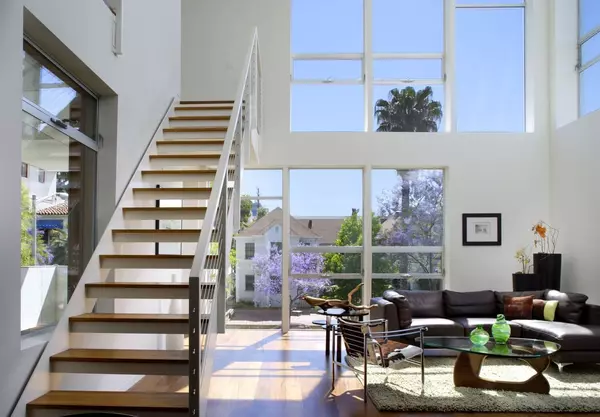Rent-Back Agreement: What It Is, How It Works, and What Buyers and Sellers Should Know

Key takeaways:
- A rent-back agreement (also called a seller rent-back or post-settlement occupancy agreement) lets the seller remain in the home after closing and pay rent to the buyer.
- It’s useful when sellers need more time to find or move into a new home, avoid temporary housing, or deal with construction or loan delays.
- Buyers benefit from flexibility and potential rental income, but they also take on landlord responsibilities and risks.
- Key terms to include: rental rate, security deposit, utilities, insurance, liability clauses, and a firm move-out date.
- Rent-back agreements are common in competitive markets but may raise legal or tax issues if the stay exceeds 90 days.
- Alternatives include flexible closing dates, bridge loans, short-term rentals, or early occupancy agreements.
A rent-back agreement can be a win-win for both sides of a home sale. Sellers gain valuable time to transition into their next home, while buyers can earn rental income as they wait to move in. This arrangement is becoming increasingly common, especially in today’s housing market. According to the National Association of Realtors, 20% of recent homebuyers faced delayed timelines due to factors like financing or construction, making flexible solutions such as rent-back agreements more attractive.
With housing inventory at historically low levels, dropping nearly 14% year-over-year in some U.S. markets (Redfin, 2024), buyers and sellers alike are often under pressure to make deals work despite tricky move-out and move-in schedules. Whether you’re selling your first home in Austin, TX, or closing on a condo in Denver, CO, knowing how a rent-back agreement works can help you avoid stressful surprises after your offer is accepted.
In this Redfin real estate guide, we’ll break down what a rent-back agreement is, how it works, and whether it’s the right move for both buyers and sellers.

What is a rent-back agreement?
A rent-back agreement is a legally binding arrangement that allows the home seller to remain in the property for a set amount of time after the sale closes. Essentially, the buyer becomes the seller’s temporary landlord. This can be a few days, weeks, or even months, depending on the agreement.
Also called a “seller rent-back” or “post-settlement occupancy agreement,” this arrangement gives sellers extra time to finalize their next move without having to move out immediately after closing.
When sellers might need a rent-back agreement
There are a few common scenarios where a rent-back agreement makes sense:
- The seller hasn’t found a new home yet and needs extra time to search.
- Construction delays from building a house push back the seller’s move-in date.
- School-year transitions make it easier for the seller’s family to stay put temporarily.
- The seller wants to avoid moving twice, perhaps into temporary housing before their next home closes.
- Delays in loan approval or closing can also create unexpected timing gaps.
In a competitive housing market, some buyers even offer flexible rent-back terms to sweeten their offer and stand out from the competition.
How does a rent-back agreement work?
Once both parties agree to a rent-back arrangement, the terms are usually detailed in a contract addendum or short-term lease. This document outlines the seller’s post-closing occupancy and helps prevent misunderstandings.
While the buyer becomes the legal owner at closing, the seller stays on temporarily as a tenant. To keep things running smoothly, the agreement should include:
- Length of stay: A clearly defined period the seller can remain in the home
- Rental rate: Often based on the buyer’s daily mortgage costs (PITI) or local market rent.
- Security deposit: Used to cover any damages or unpaid rent
- Utilities and maintenance: Specifies who is responsible for ongoing bills and upkeep
- Insurance requirements: Buyers keep homeowners insurance, while sellers may need renters insurance
- Liability clauses: To address responsibility for any property damage or injury during the stay
- End date: A clear move-out deadline, often with daily penalties if the seller overstays
To determine a fair rent, buyers and sellers can look at comparable rental rates in the neighborhood. If the seller’s stay is just a few days, dividing the monthly market rent by 30 can help establish a reasonable daily rate. For example, if similar homes rent for $3,000 per month, the daily rate would be about $100. So, a 10-day rent-back would cost the seller roughly $1,000.
Your real estate agent can usually include a rent-back addendum in the sales contract. In some cases, however, a real estate attorney may draft the agreement.
Is a rent-back agreement a good idea? Pros and cons
It depends on the circumstances. A rent-back agreement can be beneficial when timing of buying and selling doesn’t line up neatly, but it also introduces risks for both buyers and sellers.
If expectations aren’t clear or if either party fails to honor the terms, it can create tension or even legal trouble.
Pros and cons for buyers
Pros:
- Stronger offer: Buyers who offer rent-back terms may appeal more to sellers in a competitive market.
- Rental income: Collecting rent, even temporarily, can offset closing costs or early mortgage payments.
- More control over timeline: Buyers who don’t need to move in right away get flexibility.
Cons:
- Rental obligations: They now have a landlord, and must follow rental rules; even for a short time. Sellers may end up paying more in rent each month than they previously paid for their mortgage.
- Potential penalties: If they fail to leave on time, they may face fees or legal action.
- Increased scrutiny: Buyers may perform a walkthrough post-closing and expect the home in pristine condition. Damage during the rent-back period could cost you your security deposit.
Pros and cons for sellers
Pros:
- Extra time: They can close on their current home and use the proceeds toward a new one without having to move twice.
- Peace of mind: There’s no need for rushed packing or emergency short-term housing.
- Negotiation leverage: Sellers may get stronger offers from buyers willing to be flexible.
Cons:
- Rental obligations: They now have a landlord, and must follow rental rules; even for a short time. Sellers may end up paying more in rent each month than they previously paid for their mortgage.
- Potential penalties: If they fail to leave on time, they may face fees or legal action.
- Increased scrutiny: Buyers may perform a walkthrough post-closing and expect the home in pristine condition. Damage during the rent-back period could cost you your security deposit.

Legal and tax considerations
Rent-back agreements are convenient, but they can come with legal and tax complications. Knowing the risks upfront can help you avoid surprises later.
- Over 90-day stays may trigger tax implications or mortgage appraisal issues.
- Capital gain timelines and owner-occupied loan terms might be affected.
- Local tenancy laws (e.g., landlord entry laws, eviction processes) still apply.
Always involve your real estate agent and, if needed, a real estate attorney to draft or review the rent-back addendum.
Read>> How to Rent Out Your House
Alternatives to a rent-back agreement
Not everyone wants the complexity of a rent-back deal. Alternatives include:
- Flexible closing dates: Extend the escrow period to allow the seller more time before transferring possession.
- Early occupancy: The buyer moves in before closing (though this is rare and risky).
- Bridge loans: Help sellers buy their next home before selling the current one.
- Short-term rentals or storage solutions: Give sellers a temporary place to stay and store belongings without relying on a rent-back.
How to sell a house and rent back: Negotiation tips
If you’re wondering whether you can sell your house and rent it back, the answer is yes — through a rent-back agreement. Think of it as more than just a temporary rental. It’s a negotiation point that can either make your deal smoother — or create unexpected headaches if the details aren’t handled upfront. Here’s how I advise my clients to approach it:
1. Set a clear timeline
Most rent-backs last 30-60 days. As the buyer, you’ll want a firm end date and daily penalties if the seller overstays. As the seller, ask only for the time you realistically need to move into your next home.
2. Agree on a fair rent amount
Rent is often calculated based on the buyer’s carrying costs (mortgage, taxes, insurance). In a competitive market, a buyer might offer a discounted or even free rent-back to stand out. Sellers who want to sell their house and rent it back should be upfront about what they can afford, and buyers should make sure the rent fairly offsets their costs.
3. Protect everyone with a deposit
Just like a rental, a deposit safeguards the buyer against damage or nonpayment. I usually recommend at least one month’s rent, held in escrow until the seller moves out. If you’re the seller, negotiate a deposit you’re comfortable with, especially if your stay is short.
4. Spell out who covers utilities and upkeep
During the rent-back, sellers typically pay for utilities, lawn care, and basic maintenance. Put it in writing so there’s no confusion when the buyer moves in.
5. Confirm insurance coverage
Buyers should check that their homeowner’s policy covers a rent-back. Sellers should secure renters’ insurance during their stay. That way, both sides are protected if an accident happens.
6. Use rent-back as a bargaining chip
In a multiple-offer situation, buyers can strengthen their offer by allowing a flexible or even free rent-back period. Sellers who need to sell their house and rent it back can attract more offers if they make it clear they’re open to negotiating post-closing occupancy. Alternatives like bridge loans can also help sellers avoid the need for a rent-back altogether.
7. Plan for the “what-ifs”
No one expects problems, but it’s smart to prepare. If a seller refuses to leave, the buyer could face a costly eviction. To avoid this, I recommend holdover penalties for every extra day, or even an escrow holdback that’s only released once the seller moves out. In some cases, a leaseback agreement may be a better long-term solution than a short rent-back.

FAQs about rent-back agreements
- Is a rent-back agreement legal?
Yes. A rent-back agreement is a legally binding arrangement, usually included as an addendum to the sales contract or drafted as a short-term lease. Both parties should review the terms with a real estate agent or attorney. - How long can a rent-back agreement last?
Most rent-back agreements last 30–60 days, but the length depends on what the buyer and seller agree to. Stays longer than 90 days may trigger tax or mortgage complications. - How is rent calculated in a rent-back agreement?
Rent is typically based on the buyer’s monthly mortgage, taxes, and insurance (PITI), or on comparable local rental rates. A short stay may be calculated on a daily rate. - Who pays for utilities and maintenance during a rent-back?
Sellers usually continue paying utilities, lawn care, and routine upkeep while living in the home. These responsibilities should be spelled out clearly in the agreement. - What happens if the seller doesn’t move out on time?
The agreement should include penalties for holdover days (daily fees or escrow holdbacks). If the seller refuses to leave, the buyer may need to pursue legal eviction, which is why clear terms are crucial.
The post Rent-Back Agreement: What It Is, How It Works, and What Buyers and Sellers Should Know appeared first on Redfin | Real Estate Tips for Home Buying, Selling & More.
Categories
Recent Posts










GET MORE INFORMATION

